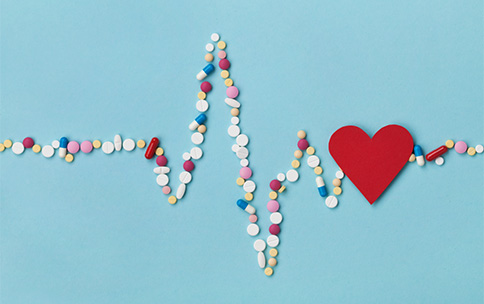
Parental exposure to some environmental pollutants, foods, cosmetics, and drugs may affect fetal development and lead to birth defects. However, the causes of most birth defects are not understood. It can be challenging to prescribe drugs to pregnant patients, as there is not always straightforward information on potential risks of drugs for pregnant populations. Modern machine learning methods offer new ways of predicting drug effects using networks that connect objects and effects called knowledge graphs. A knowledge graph can connect datasets from different sources, allowing different types of information to be integrated together to explore connections between items in those datasets and even reveal new relationships that couldn’t be seen before.
Researchers funded by the Common Fund Data Ecosystem (CFDE) have developed a knowledge graph-based tool to explore the relationship of small molecule drugs to the biological pathways they affect and their links to birth defects. The collaborative, interdisciplinary research team included experts from four Common Fund Programs: the Library of Integrated Network-based Cellular Signatures (LINCS), Illuminating the Druggable Genome (IDG), Stimulating Peripheral Activity to Relieve Conditions (SPARC), and the Gabriella Miller Kids First Pediatric Research Program (Kids First). Their tool, named ReproTox-KG, uses existing data on drug-gene interactions and their effects on development to predict these properties for other drugs that aren’t as well-characterized, greatly speeding up screening drugs for potential negative effects. ReproTox-KG builds a network using connections between drugs, birth defects, and genetic pathways with data and resources from Common Fund Programs including Kids First, IDG, and LINCS, as well as non-Common Fund resources including the FDA and CDC.
The knowledge graph can predict similarities between drugs based on their structure and how they affect activity of different genes. It then uses this similarity to predict what drugs can cross the placental barrier and how dangerous a new drug might be for use in pregnant patients by comparing against known effects of drugs that have been characterized by the FDA. The researchers showed that ReproTox-KG produces high-quality predictions, allowing them to use existing databases to predict the effects of hundreds of thousands of small molecule drugs on development, as well as to identify ways in which potential drug-related birth defects are connected to specific genetic and molecular mechanisms. ReproTox-KG will allow clinicians and researchers to explore molecular mechanisms behind birth defects and predict whether a new drug may cause potential reproductive issues. This tool is an example of how the reuse of data, resources, and expertise from across multiple Common Fund programs can accelerate biomedical research and open new lines of scientific discovery.
Read more: Toxicology knowledge graph for structural birth defects. Evangelista JE, Clarke DJB, Xie Z, Marino GB, Utti V, Jenkins SL, Ahooyi TM, Bologa CG, Yang JJ, Binder JL, Kumar P, Lambert CG, Grethe JS, Wenger E, Taylor D, Oprea TI, de Bono B, Ma'ayan A. Commun Med. 2023 Jul 17;3(1):98.
Explore the ReproTox-KG tool: https://maayanlab.cloud/reprotox-kg


